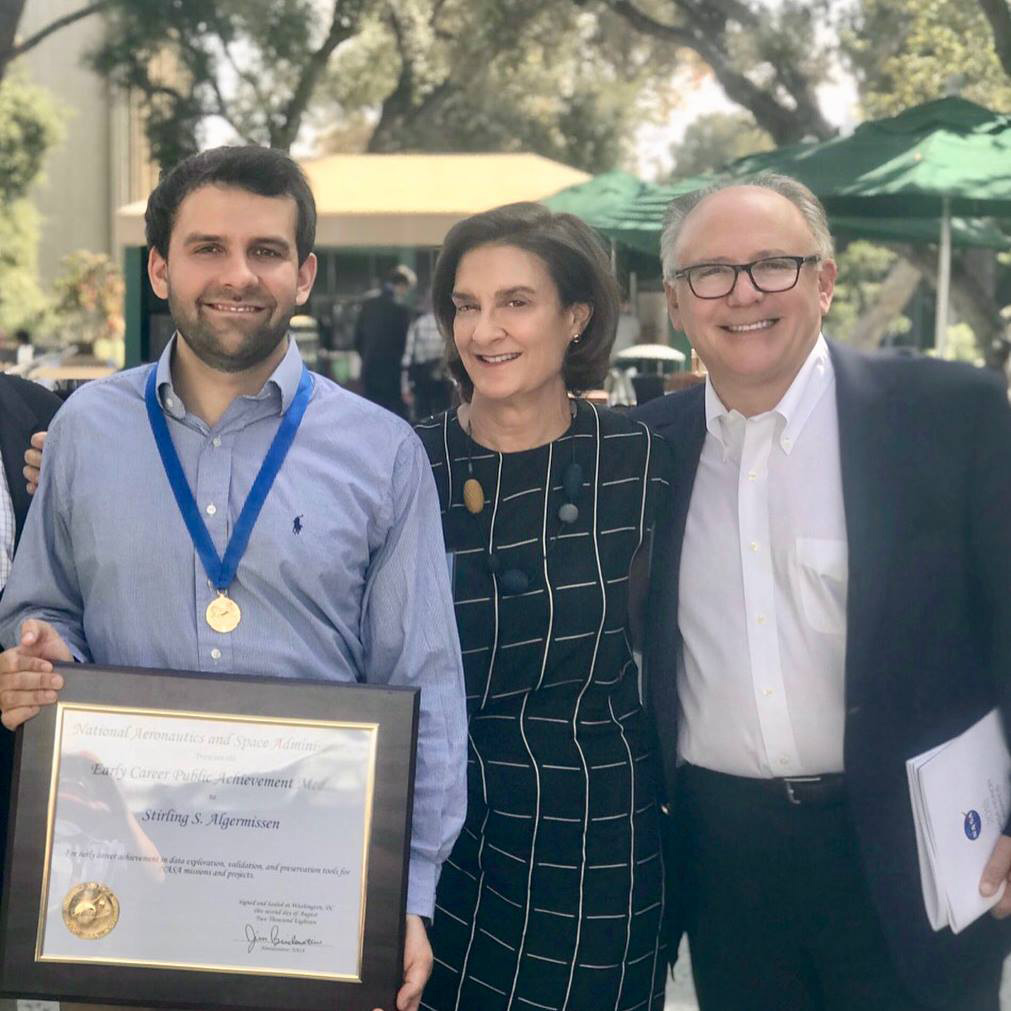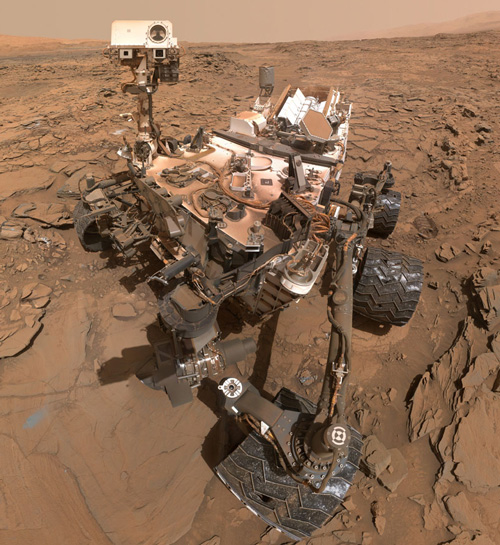
Stirling Algermissen
Software Engineer - NASA's Jet Propulsion Laboratory
Polytechnic School, Pasadena, CA
Boston University
Bachelors, Computer Science
I was born in Pasadena, California and grew up only a couple of miles from NASA's Jet Propulsion Laboratory (JPL). I now live in the Silver Lake neighborhood of Los Angeles.
I first made a personal connection with outer space when I was 11-years old. My dad took me to JPL's annual open house. It was like going to Disneyland for me. I still have the pins and handouts that were given out that particular day.
I applied to JPL's summer internship program while in college. As a computer science major, JPL was my top choice for where I wanted to spend my summer. I was accepted into the student internship program and worked in JPL's IT department. I enjoyed the experience so much that I decided to re-apply for an internship the following summer.
The next summer, I was selected for Caltech's Student Undergraduate Research Fellowship (SURF) program. While interning with SURF, I developed software to support the mars Science Laboratory mission. (I worked in the same JPL group where I am today.) I was offered a job after the internship ended and quickly accepted it. As soon as I graduated college I started work at JPL. This was three months before MSL's historic landing on Mars -- I had to scramble to train for the MSL surface operations role.
Many different people have inspired me along the way. When I was in 8th grade, my parents helped me find a tutor at Caltech so I could explore my interest in computer science. I was tutored by former Caltech professor Ben Brantley for years. He was the one who inspired me to study computer science in college at Boston University. My professors there were also great role models.
I design software to solve problems. I spend most of my time working on MSL where I develop new software and maintain existing software. I also work on MSL operations so I often use the software I write to support MSL's day to day activities. This combination of software development and operations gives me a unique perspective that allows me to see where there are shortfalls or areas for improvement in mission software and be able to solve them. Besides MSL, I work for Advanced Multi-Mission Operations System (AMMOS) and Planetary Data System (PDS) where I design software that is shared across several missions.
I'll never forget the night when the Curiosity rover landed on Mars. I had trained for months for my surface operations role and had practiced extensively for the landing. To say it was tense would be an understatement -- there was so much uncertainty, and landing the rover with the sky crane seemed risky.
I remember when the first front hazard avoidance camera image arrived from the rover. It was just a thumbnail, but it was incredible. The feeling of camaraderie and success was unlike anything I had experienced.
After landing, "Mars Time" started: Work schedules were based on what time it was on Mars instead of Earth. I had many shifts where I worked all night and slept all day. It was like having perpetual jet lag, but I loved it.
Working on a NASA mission requires many people with many different backgrounds. Specialize in something that you enjoy and that a mission would need and work hard at it. Apply to NASA internships whenever possible.
Spending time with friends and family. Film, live music and video games. I enjoy hiking and camping throughout California. I also play on the JPL softball league.
Study hard. You will get frustrated, even if you're studying something you enjoy. Don't let that discourage you.

Stirling is a member of the Mars Science Laboratory (MSL) Operations Product Generation Subsystem (OPGS) operations team.
His roles in the team include tactical analyst and payload downlink lead/shift lead duties. Aside from his operations duties he is also a software developer for Operations Product Generation Subsystem (OPGS), Planetary Data System (PDS), and Advanced Multi-Mission Operations System (AMMOS).
I started at the Jet Propulsion Laboratory within weeks of graduating from Boston University and trained for Mars Science Laboratory (MSL) surface operations in less than three months. I participated in MSL's landing and have been supporting MSL surface operations since then, working my way up to my current roles as an Operations Product Generation Subsystem (OPGS) shift lead, engineering camera payload downlink lead, and recently, payload downlink coordinator. I have used my experiences in operations to develop software that supports MSL surface operations.
Planetary science is a global profession.

